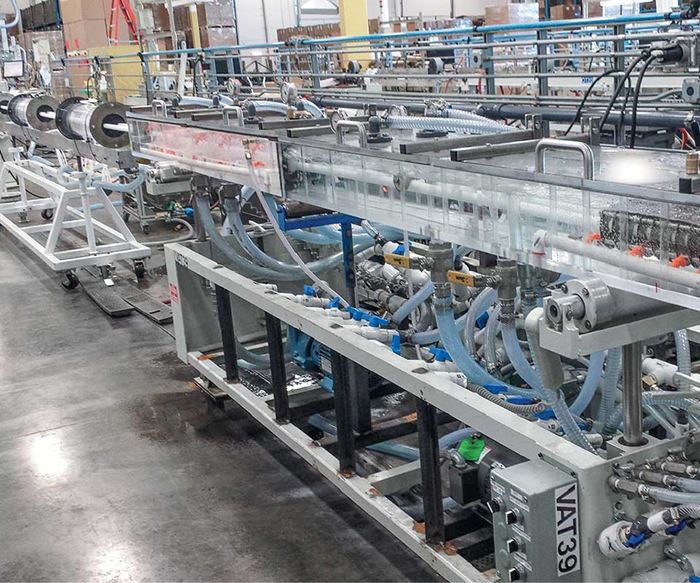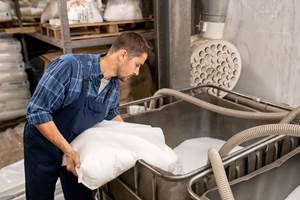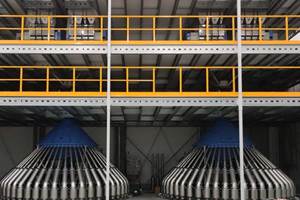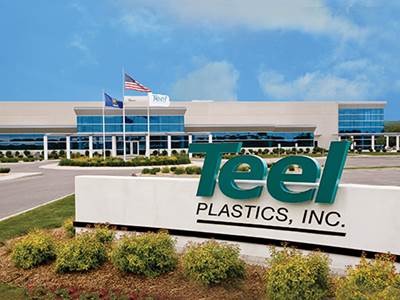IoT Strategy Cuts Human Error at Teel
Controlling up to 20 parameters from a single web interface has slashed setup time and increased output at a leading profile processor.
In a true demonstration of the Internet of Things (IoT)—aka Industry 4.0—in action, leading profile processor Teel Plastics Inc. recently added new software technology that allows operators to control all process parameters from one place to reduce the possibility of human error.
The Baraboo, Wis.-based processor, whose products are used in a wide range of applications (see Aug. ’14 cover story), teamed up with Kepware, Portland, Me., on a software package that allows Teel to control up to 20 process parameters and line components through a single web interface. This includes factors like temperatures, line speeds, and the addition of any line components.
“There are many variables that go into a single recipe, and our employees are interacting with, and having to memorize and apply, multiple recipes during a single shift,” says Owen Gwynne, Teel’s senior programmer. “There are a lot of different reasons for errors—employees are moving too quickly; it’s a recipe they are unfamiliar with; or they’ve entered in the middle of production—but what seems like a miniscule issue can lead to our products having flaws or manufacturing downtime. We knew there had to be a way to minimize some of this error.”
In Wisconsin, Teel Plastics has 27 extrusion lines that produce different products at various times throughout the day. Each line requires a recipe for every product, a common scenario in custom plastics processing. These recipes include different material inputs, equipment, heating components, and other variables. Recipes can change several times in one day, and ones that haven’t been used in months can resurface when new orders come in.
All these variables caused instances where human error led to deviations in the recipes. These deviations inspired Teel to find a solution that would allow operators to control all pieces electronically and reduce errors.
Recognizing the need for connectivity, data access, and scalability, Teel Plastics worked to develop a competitive strategy that would also enable the firm to capitalize on the benefits of IoT. After evaluating several IoT offerings, they found that many solutions could address one component of their needs—such as a business aspect, protocol, or standard—but not everything. Further complicating the process, many of Teel’s machines are custom built, so the firm needed a solution capable of communicating with a range of PLCs from vendors including Allen-Bradley and Siemens.
Though at first Teel considered developing an in-house solution, the company ultimately found that Kepware’s IoT Gateway for KEPServerEX provided the most seamless, reliable, and scalable way to control all essential components.
Now, a Teel Plastics line operator can send a pre-saved recipe with more than 20 parameters from a web interface to the IoT Gateway, which then distributes the instructions to the machines on the line. Teel says this has proven to be a much more efficient and effective method than the previous manual process; and by providing device connectivity to multiple PLCs, it drastically reduces risk of human error. With these new processes, Teel reduced its setup times by 30%.
“By incorporating the IoT throughout our shop floor, we’ve been able to take something that previously required memorization and 30 to 40 clicks and bring it down to a single click of a button,” states Gwynne. “Working with the IoT Gateway is seamless. We’re able to trust that as our recipes evolve, KEPServerEX will be able to take on anything and everything that we throw at it.”
Since implementing the IoT Gateway, Teel has also gained increased visibility into some of the more granular details of its manufacturing process. This in-depth plant-floor data has enabled Teel to test different variables, which has decreased downtime. By monitoring different aspects of production (for example, room temperature) and making slight adjustments, Teel has also made its recipes much more efficient. In addition, seamlessly aggregating data on indicators such as humidity or wear on parts into a central database enables operators to monitor equipment for predictive maintenance, and enables management to make more informed decisions on recipes. This has resulted in higher output and quality, says Gwynne. For example, prior to the IoT Gateway implementation, one line was running at a rate of 18 parts/min. Now, output is 35 parts/min.
The IoT Gateway also gives Teel Plastics employees ease of mind, Gwynne adds. Operators no longer have to memorize recipes, which allows them to complete tasks with greater confidence. Additionally, switching between shifts has never been smoother, as incoming operators can easily pick up right where the previous operator left off.
At the moment, Teel has specific extrusion lines connected to Kepware but is moving toward having the entire plant linked.
Related Content
What Comes After MES? It’s Already Here
If you’re not sure what the initials M-E-S mean, or whether that’s something your business needs, it may be time to look beyond MES to the next generation of manufacturing connectivity.
Read MoreHow Production Monitoring Can Make You a Better Processor
Real-time information on all your production equipment not only boosts productivity and profitability, but it encourages proactive vs. reactive thinking and sharing of best practices. See how this approach benefited a blow molder with 19 plants.
Read MoreSeven Automation Opportunities You May Have Overlooked
While not every process is appropriate for automation, the rapid advancement of robotics is allowing a much wider array of businesses access to this technology. Here are some areas where automation makes sense that you might not have considered.
Read MoreFilm Processor Automates Complex Resin Management, Blending & Distribution System
Polipak of Poland moves to BlendSave system to support sustainability and Industry 4.0 objectives.
Read MoreRead Next
Teel Plastics: Where Science, Tech, Quality and Innovation Meet
This family-owned custom profile and tubing business controls its own destiny by controlling, well, everything.
Read MorePeople 4.0 – How to Get Buy-In from Your Staff for Industry 4.0 Systems
Implementing a production monitoring system as the foundation of a ‘smart factory’ is about integrating people with new technology as much as it is about integrating machines and computers. Here are tips from a company that has gone through the process.
Read MoreAdvanced Recycling: Beyond Pyrolysis
Consumer-product brand owners increasingly see advanced chemical recycling as a necessary complement to mechanical recycling if they are to meet ambitious goals for a circular economy in the next decade. Dozens of technology providers are developing new technologies to overcome the limitations of existing pyrolysis methods and to commercialize various alternative approaches to chemical recycling of plastics.
Read More

























